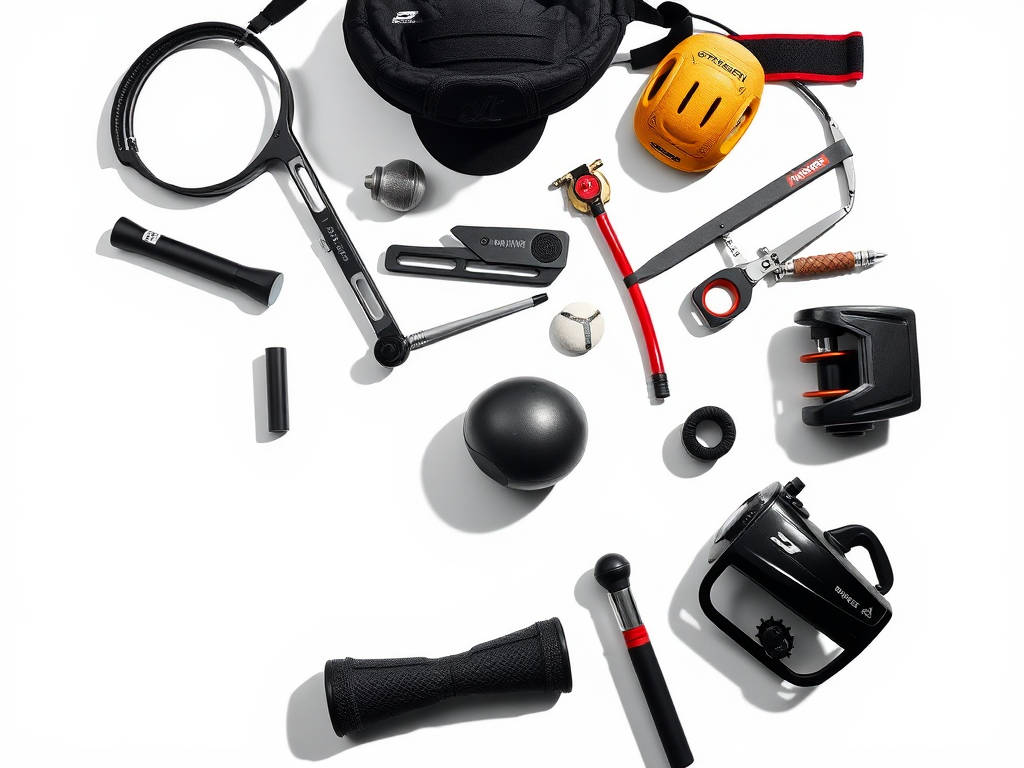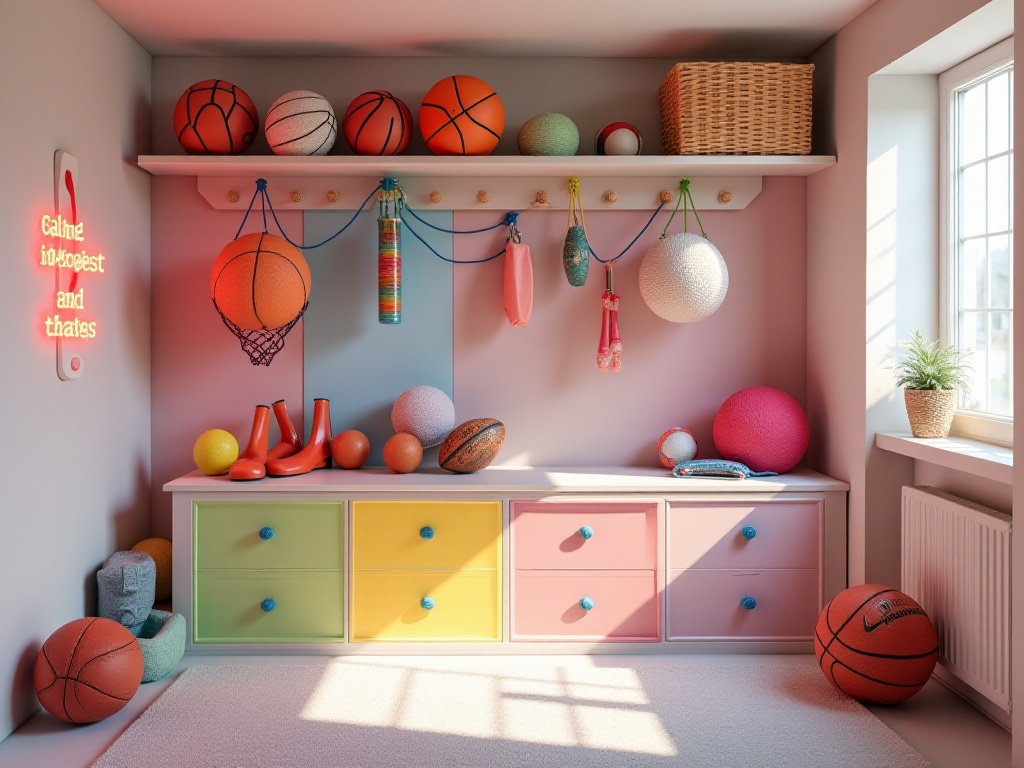Introduction
Recently, I noticed that my sports equipment collection has been growing, with various gear almost filling up my room. As a sports enthusiast, I deeply understand the importance of storage. I remember when my room was initially like a "sports equipment museum," with gear scattered everywhere, requiring extensive searching to find anything. After more than a year of exploration and practice, I finally found an effective storage solution, and today I'd like to share my experiences.
Current Situation Analysis
A recent interesting survey showed that young people's enthusiasm for sports is at an all-time high, with the average household owning nearly twice as many pieces of sports equipment compared to five years ago. Especially among young people in first-tier cities, sports equipment storage has become a common concern. Observing my friends, most have similar issues: they keep buying more equipment, but storage space doesn't increase accordingly. Particularly in major cities like Beijing, Shanghai, Guangzhou, and Shenzhen, where real estate can cost over 5,000 yuan per square meter, every inch of space is precious.
I remember a friend who lived in a 40-square-meter studio apartment in the city center. She was a fitness enthusiast who managed to fit a treadmill, spinning bike, yoga mat, dumbbells, and more than ten other pieces of equipment. However, due to poor storage, her small apartment often looked like a warehouse. This situation is actually very common, and from what I understand, many young people face similar challenges.

Equipment Categories

Outdoor Gear
When it comes to outdoor equipment, it's truly a love-hate relationship. As an outdoor sports enthusiast, my equipment list is quite extensive. Starting with water sports equipment, I have several surfboards: longboards, shortboards, and the recently popular paddle boards. Each board has its characteristics, suitable for different wave conditions and styles. Add to that various swimsuits, sun protective clothing, and surf shoes, and these items take up considerable space.
Last summer, I became obsessed with camping and acquired lots of gear. Tents, sleeping bags, camping tables and chairs, cooking equipment, lighting devices, etc., counting carefully, there are nearly thirty items. Although most equipment can be folded for storage, it's still overwhelming when spread out. Especially climbing equipment, like trekking poles, crampons, and safety ropes, which aren't used often but can't be discarded as they're safety equipment.
Fishing equipment is particularly irresistible, with various fishing rods, lines, tackle boxes, landing nets, and toolboxes filling up an entire storage cabinet. Every fishing trip feels like moving house, but these items are all necessary and indispensable.
Indoor Equipment
Indoor sports equipment is truly diverse. Starting with ball sports, from basic basketballs and footballs to badminton, tennis, table tennis, and even squash. Each sport has its corresponding rackets or equipment, with over ten rackets alone. While these items aren't large individually, they become challenging to store when there are many.
Fitness equipment is probably the most space-consuming category. There's a professional-grade treadmill that, although foldable, takes up nearly two square meters when unfolded. Then there's the multi-functional training machine, which is very practical but quite large. The dumbbell rack is filled with weights ranging from 2.5 to 20 kilograms, totaling over 200 kilograms. Smaller items like yoga mats, foam rollers, and resistance bands may not be large individually, but they become an issue when numerous.
Based on my observations and market research, young households typically own more than 15 types of indoor sports equipment, and this number continues to grow. Especially popular new equipment like suspension trainers, kettlebells, and resistance bands keep enriching our sports equipment inventory.
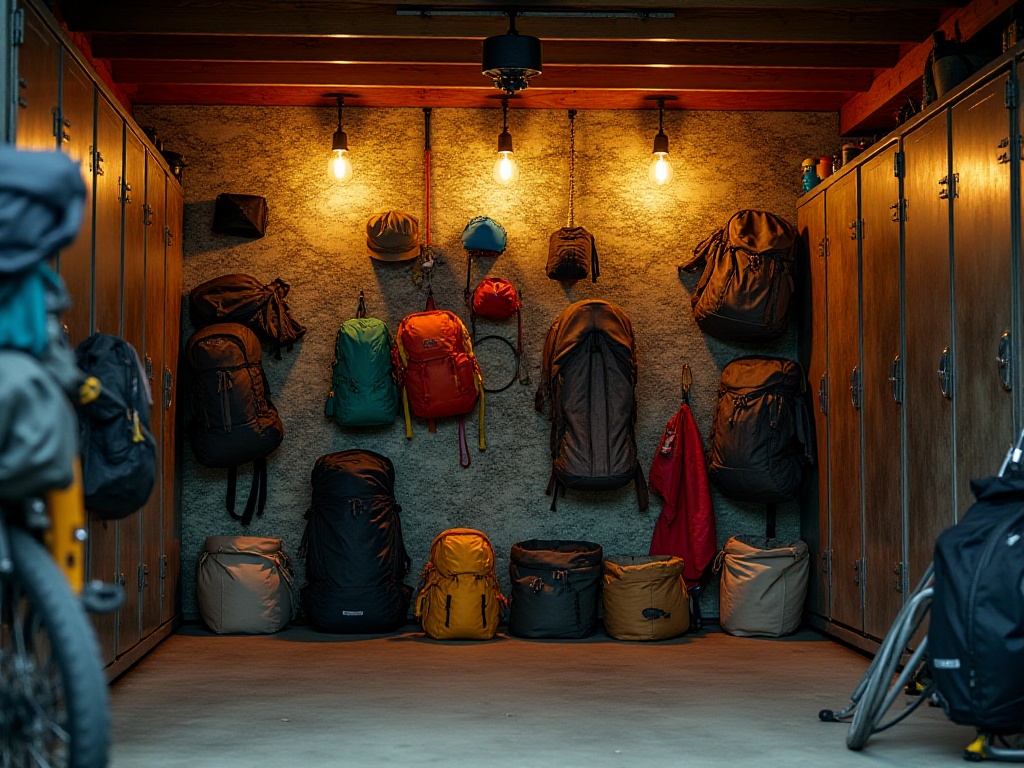
Storage Solutions
Space Planning
Space planning is absolutely key to successful storage. Last year, I was determined to completely transform my home's storage system, spending two full weekends planning and implementing. First, I conducted detailed measurements and assessments of available space, including walls, corners, and behind doors. I discovered that many people overlook vertical space utilization, when walls and door backs are actually excellent storage areas.
I transformed one garage wall into a sports equipment zone, installing an adjustable hook system. The system's greatest advantage is its flexibility, allowing hook positions and quantities to be adjusted as needed. I hung bikes vertically on the wall, not only saving substantial floor space but also making them easily accessible. Various rackets are secured with specialized hooks, both aesthetically pleasing and practical.
In the bedroom, I fully utilized the upper closet space, storing infrequently used camping equipment and seasonal sports gear there. I specifically chose transparent storage boxes so I could see their contents at a glance. The balcony was converted into a mini gym, with a foldable training rack that can be collapsed to save space when not in use.
Through these modifications, my storage space at least doubled. Most importantly, these storage solutions balance practicality and aesthetics, making the home look both neat and well-designed.
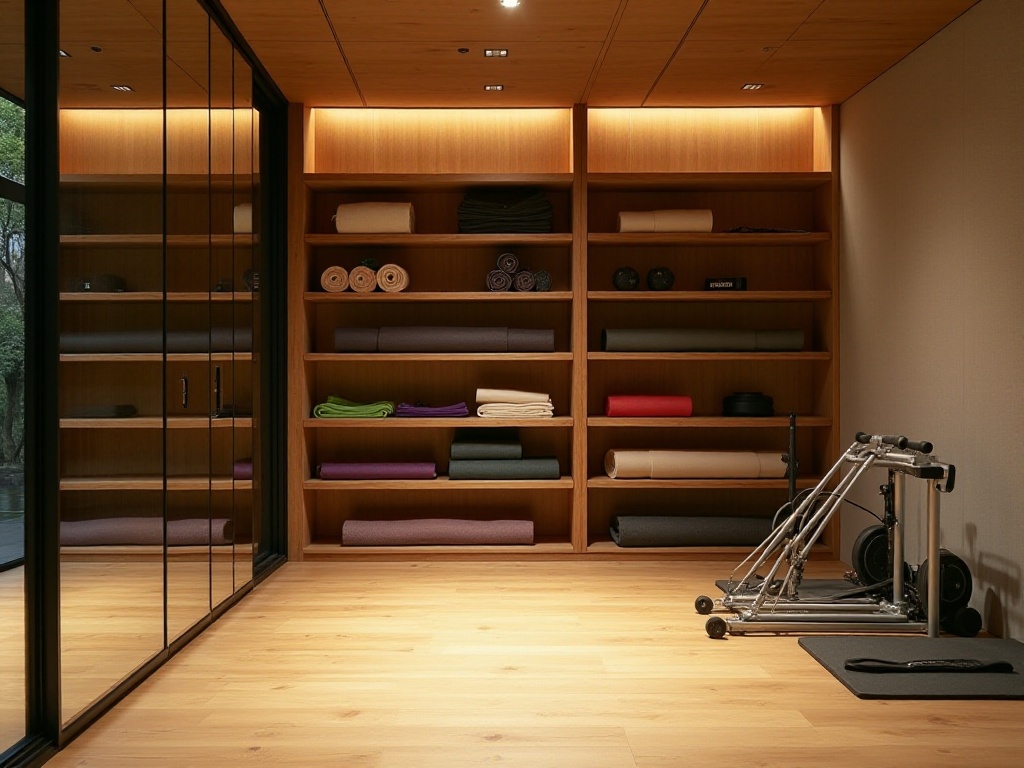
Categorized Storage
Categorized storage is a technical matter requiring solutions based on equipment characteristics and usage frequency. My approach divides all sports equipment into three categories: frequently used, seasonally used, and backup items. Frequently used equipment should be placed in the most accessible locations, like my daily-use yoga mat and dumbbells which are kept in a dedicated corner of the living room.
For seasonal equipment, like winter skiing gear and summer surfboards, I rotate storage locations based on seasons. Using transparent storage boxes is really important, and I label each box with detailed content lists and last-use dates. This not only facilitates finding items but also helps identify equipment that hasn't been used for long periods, allowing timely decluttering.
Small equipment storage requires attention to detail. I use many small storage boxes and dividers to organize resistance bands, protective gear, sports watches, and other small items. Each storage box is labeled and kept within arm's reach. While this categorization system might seem complex, it becomes very convenient once you get used to it.
Maintenance
Regarding maintenance, this is absolutely key to extending sports equipment lifespan. I have a dedicated maintenance schedule and spend time each week doing basic equipment care. For example, the treadmill needs regular cleaning and oiling, dumbbells need wiping to prevent rust, and yoga mats need cleaning and disinfection. These seemingly simple maintenance tasks are actually crucial for equipment care.
I've also established an equipment usage log to record the frequency and condition of each item. This not only helps identify equipment needing repairs but also helps evaluate which items are truly necessary. Through this method, I've discovered some equipment is rarely used and could be considered for transfer or donation to those in need.
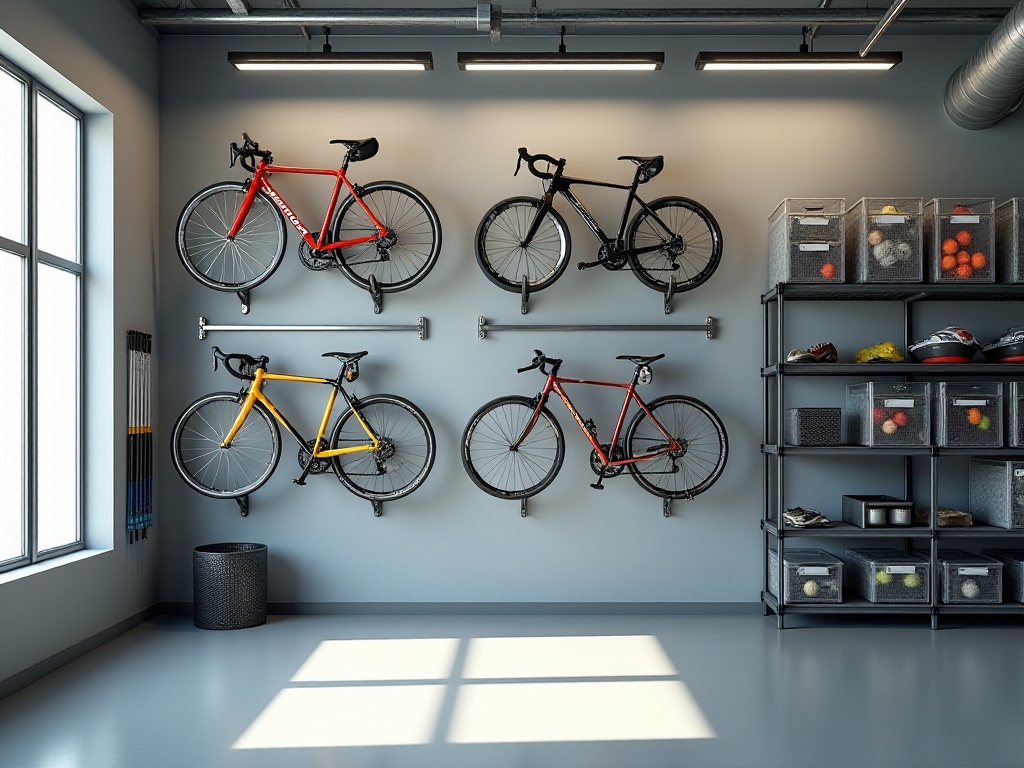
Practical Tips
When it comes to practical tips, I can share some particularly useful tricks. For ball storage, I used a super simple method: installing elastic nets on storage racks. This not only secures balls of various sizes but also prevents deformation. For small equipment prone to tangling, like resistance bands, I use a roller storage method, keeping them neat and untangled.
Yoga mat storage also requires technique. I specifically bought a vertical yoga mat rack that can hold multiple mats simultaneously while providing good ventilation to prevent mold. For larger equipment like treadmills and spinning bikes, I chose models with wheels, making them easy to move for cleaning.
I particularly like using hook systems for storing rope-type equipment like jump ropes and resistance ropes. Through specific hanging methods, this prevents rope tangling while maintaining optimal condition. For precision electronic equipment like sports watches and heart rate monitors, I use moisture-proof boxes and regularly check battery status.
Common Mistakes
Regarding storage mistakes, I think the most common is pursuing space efficiency while neglecting accessibility. I made this mistake, once stacking all equipment together to save space, resulting in having to move many items around whenever I needed something specific. Later, I understood that good storage solutions should find a balance between space utilization and accessibility.
Another common mistake is accumulating too much unused equipment. For a while, I was obsessed with buying various novel sports equipment, only to find many items were used just once or twice. Now I rationally evaluate the necessity of each piece of equipment, considering whether to keep items that haven't been used for three consecutive months.
Another mistake is ignoring ventilation in storage areas. Many people stuff equipment into enclosed spaces to save space, resulting in mold or damage. Especially for leather or fabric equipment, damp storage environments easily breed mold. So now I pay special attention to storage space ventilation, using dehumidifying boxes or moisture-proof agents when necessary.
Summary and Future Outlook
After more than a year of exploration and practice, I finally found a sports equipment storage solution that works for me. This process taught me that good storage isn't just about organizing things neatly, but more importantly, establishing a scientific management system. This system needs to consider usage frequency, seasonality, maintenance, and various other aspects.
As sports and fitness become increasingly popular, more people will face sports equipment storage issues. But I don't think this is a difficult problem; the key is having patience and methodology. I hope sharing my experience provides some inspiration and help. Storage itself is a living art, and when you have all equipment organized properly, that sense of achievement is incomparable.
Finally, I want to say that storage isn't achieved overnight; it requires continuous adjustment and optimization. Everyone's living habits and space conditions are different; the key is finding what works best for you. I look forward to seeing more people share their storage experiences, so we can all improve our sports equipment storage together.
Related articles


